Tavern Queue: Metal Gear Solid
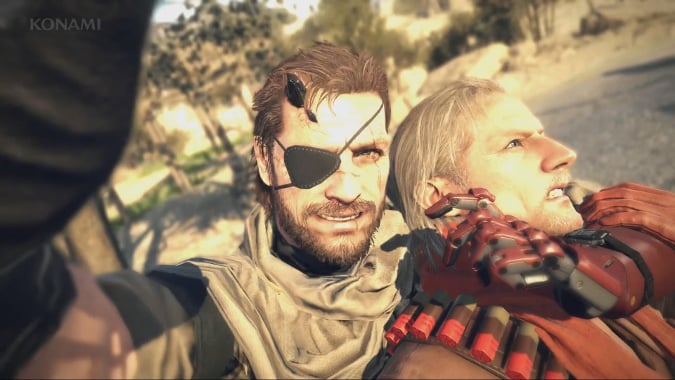
You asked me questions about Metal Gear Solid. I’m here to use far too many words answering them.
The Metal Gear Solid wiki is extremely thorough. Be careful, you can get lost in there for days. If it’s an option for you, I recommend you play through the game in order first. I find the story of Metal Gear Solid is difficult to explain, but makes total sense if you’ve experienced them firsthand. Someone who knows little or nothing about Metal Gear Solid is likely to have a hard time making sense of anything on the wiki. If you’ve played them but missed certain details or have certain questions, the wiki can fill those gaps.
I’ve heard this from people a lot, but never understood it. Maybe I’ve simply adapted to the absurdity that is Metal Gear Solid, but I don’t find the story any more ridiculous now than it was in the first Metal Gear Solid game. Sure, if you look at MGS1 and then MGS5, everything in between is going to be nonsense. But if you’ve played them all, they tie into each other just fine.
People say MGS1 was more realistic than the others, but … really? Really? Solid Snake is a clone fighting his twin clone and an army of clone soldiers. He fights a cowboy, a cyborg, a flying telekinetic, a man wielding a cannon he tore off of a fighter jet, and a giant mecha.
The entire series exists on a spectrum of absurdity and where each game falls on that spectrum depends on where you are within a given game. Most of Metal Gear Solid 3 is as gritty and realistic as Metal Gear Solid has ever been, a classic spy film in video game format… except there’s also a man who wields the power of lightning, a stroll down the river Styx, and a man full of bees.
In terms of technology, Metal Gear Solid 2 is probably the most plausible. Its themes and message about control of information, propaganda, and the rise of artificial intelligence are issues we’re dealing with in the real world right now. If they released it in the year 2016, people would roll their eyes and say it’s too derivative of the headlines. Simultaneously, Metal Gear Solid 2 is regarded as the point where the series became outlandish. How can it be both at the same time? The truth is it is both at the same time. What’s why I love Metal Gear Solid.
The entire franchise is absurd. It’s no more or less absurd than it ever was.
Following that, Big Boss aimed to create a haven for those abandoned warriors, their own micronation in a way?
Each game has its own contained theme, but the arc which tends to carry through all of the games is yes, soldiers are seen as tools by their respective world governments. Governments use them until they’re no longer needed or until they’re broken — they don’t care what happens, because you can always get another hammer. The overarching theme is also one of conflict: soldiers are necessary tools because of war and conflict. Throughout the Metal Gear Solid timeline, war shifts and changes, but it’s always there, always being refined. There’s always someone pursuing a method of creating the perfect soldier or the perfect weapon for the sake of warfare.
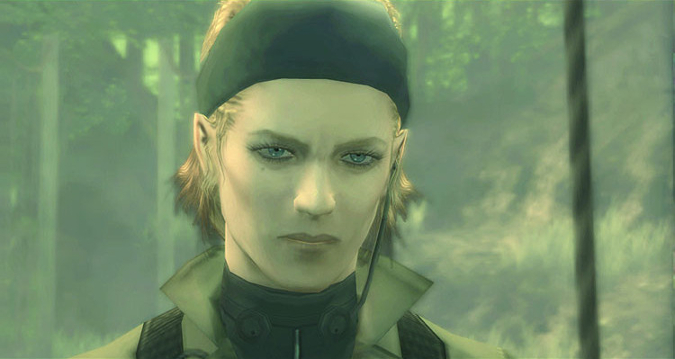
The Metal Gear Solid games weren’t released chronologically, but if you set them in order of their proper timeline, all of the major players in the series were trying to fulfill one goal. That goal is often referred to as “the will of The Boss.” The Boss was really the character who set the series in motion — she was the perfect soldier of her time, the consummate patriot, fought in multiple wars, stormed the beaches of Normandy, was a pioneer of space exploration, mother to Revolver Ocelot, mentor to the man who became Big Boss, the genetic father of Solid Snake. She used some of her final words to discuss what the Earth looked like during a covert space mission she’d performed earlier in her career: she saw a world without borders. After her death, the result of being discarded as merely a tool of the United States military, everyone who looked up to her as a hero tried to fulfill her vision. They all interpreted her will differently.
Big Boss, her protégé, envisioned a world where soldiers weren’t ruled by government entities — soldiers were the government. He founded Militaires Sans Frontières and the micronation of Outer Heaven, where soldiers were their own authority. Soldiers from all walks of life could make Outer Heaven home regardless of race or religion. Soldiers weren’t sent to die by a greater authority — they were the greater authority. Cipher (a.k.a. Zero) interpreted The Boss’s will as a world unified under one rule. He created The Patriots, later revealed to be an artificial intelligence, to unify humanity through the use of information and the manipulation thereof. Skull Face, the antagonist of the most recent installment of the series, tried to wipe out the English language partially out of spite, and partially as a means of control. In order to create a world without borders, he sought to make every nation (and potentially every person) in the world a nuclear power beholden to him.
Ultimately, Big Boss realized The Boss probably wasn’t being philosophical or metaphorical. Not as much as they all thought, anyway. She saw the world as it is from above: a world without borders. If anything, she wanted peace, and none of them managed to attain any semblance of peace in the world. All any of them managed to do was create more conflict, many of them still existing as tools to be used — or becoming the ones using people as tools.

I wouldn’t say he pioneers the technology. It’s more Hideo Kojima (and the Metal Gear Solid developers in general) put great effort into integrating available technology into their games. When new consoles are released, there are always these features which seem like silly additions, no more than bells and whistles. The controller vibrates when you take damage! Whoa! Is that necessary? Absolutely not. For the most part, that was the only purpose to the rumble pack. You took damage, it shook. You didn’t need that. You could see on-screen if you took damage. It was a completely silly feature.
But Metal Gear Solid tended to look at those things and wonder how they could actually use them. Maybe they only used those features for brief moments, but they did it. The Psycho Mantis boss fight in the first Metal Gear Solid is a great example of this, yeah. First, the PlayStation was one of the first game consoles with a memory card — external memory storage rather than saving data in a game’s individual cartridge. The console accessed that data to load or save a file. In the Psycho Mantis encounter, the boss displays his “mind reading” abilities by calling out any games he recognized on your memory card. “Oh, you like to play Silent Hill, I see.” That was mindblowing if you didn’t realize accessing your memory card is what was actually happening there. You probably looked at the Silent Hill case sitting next to your console and your jaw dropped.
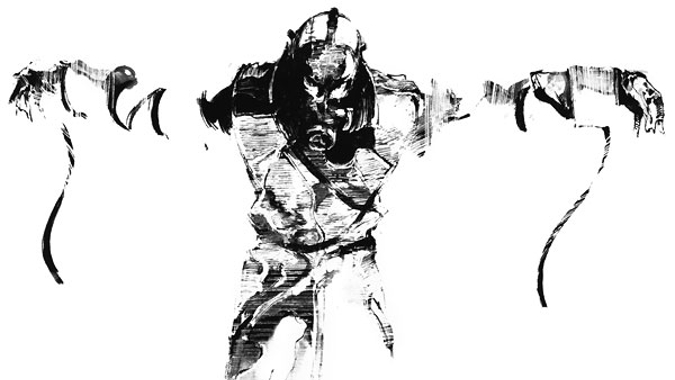
If you had a rumble-capable controller plugged in, Psycho Mantis also displayed his telekinetic abilities by telling you to put your control on the floor. Then he’d “move” your controller. The rumble would kick in, making your controller vibrate away from you.
Another example is Metal Gear Solid 2. The PlayStation 2 controllers used pressure-sensitive buttons. If you pushed a button softly, it was considered a different input than if you slammed the button down. If you only pushed the button down halfway, it was a different input than a full press. Where most games with gunplay ask you to push a shoulder button to draw your weapon, Metal Gear Solid 2 asked you to lightly press the “Fire” button. If you controlled your trigger finger properly, you could hold up an enemy. If you pushed the button, you pulled the trigger — you shot someone. When it came to movement, pushing the joystick lightly in one direction would make you move more slowly, and thus more quietly. If you pushed the joystick all the way, you’d move faster, thus louder. In a game about stealth, these things were important. It required self-control to stealth properly. If you started to panic and mash buttons, your actions were loud and uncontrolled, getting you into trouble.
Ports to other consoles had to change the control scheme. Pressure-sensitive buttons weren’t present elsewhere. If you play Metal Gear Solid 2 now anywhere other than on a PlayStation 2 — original disk, original hardware, original controller — you’ll use a shoulder button to aim. Your personal tension and how you hit the buttons doesn’t translate to the gameplay anymore.
There are a few other examples, but I’ll end with just one more, which isn’t about the hardware. You know all of those games where you can look at a 3D character model and spin them around to see the details from all angles? Heroes of the Storm has this. When looking at a character in the shop, you can turn them around and check them out. If you spin the character model too fast in Heroes of the Storm, the character gets “dizzy” and plays their stun animation. In Metal Gear Solid 3, this was an actual game mechanic. A core part of MGS3 was survival: you had to treat your wounds, hunt your food, and so forth. If you took a bullet wound, you had to open your menu, remove the bullet, sanitize the wound, use sutures and bandages. If you ate poisoned food, you could spin Snake’s character model around in the menu until he got dizzy and puked, purging him of the poison. I don’t know if Metal Gear Solid inspired Heroes of the Storm doing it — MGS might not have been the first to do it — but I like to think so.
What other games use as jokes, Metal Gear Solid uses as a game mechanic. And, somehow, Metal Gear Solid increases immersion by breaking the 4th wall, something notorious for destroying immersion. It’s masterful.
From an early age, Metal Gear Solid taught me what a fun story could be. It transcends a specific genre. It’s a military shooter, sure. But it’s a military shooter which blends fact and fiction. It’s a military shooter which is fine with having intense stealth segments and bombastic RPG-style boss fights. It has moments of gritty realism, it has elements of science fiction, fantasy, the supernatural, and the paranormal. The series isn’t afraid to break out of its box. It isn’t willing to let itself be shoved into one category. It pulls in all of these different elements and trusts the player to accept it and enjoy it. You can have historically accurate weapons and monologues about nuclear proliferation at the same time you have badass cyborgs, creepy vampires, and a man full of bees. Why not? If you set the right tone, you can do anything you want. There are no rules. There are no limits.
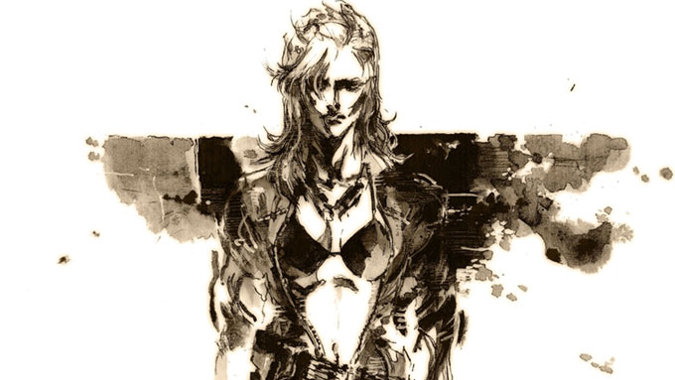
And while Metal Gear Solid absolutely does still have issues in regards to the sexualization of women in its franchise, the series taught me it was okay to have badass women in stories and games, too. In Metal Gear Solid, the women are sexualized, but they also have real agency. They’re important. They have a role in the story. They’re complex. The Boss arguably set off the story of the entire franchise and she was so many things: she was a soldier, a mother, a teacher, a mentor, a hero. Her character was sleek and sexy, yes, but her on-screen presence was powerful. You forgot all about her sexiness when you witnessed her warrior physicality. She had strengths. She had weaknesses. Her existence had meaning.
In the exact same installment of the game, you had Eva. She was sexualized to an even greater extent, but she wasn’t helpless, either. She wasn’t a soldier or a badass in hand-to-hand combat like The Boss. She had her own strengths, her own weaknesses, her own role and motivations. She was part of something greater and not just a bikini babe.
Characters in Metal Gear Solid experience highs and lows. They have moments of joy, but they experience trauma, too. They hurt, they change, they evolve, and they’re never the same again. And Metal Gear Solid recognizes that trauma. The series recognizes emotional pain is as real and as horrifying as physical pain — and sometimes worse.
The characterization of individuals like The Boss, Eva, and others throughout the franchise — they’re the basis from which I look at fiction, whether it be games, novels, or whatever. Who are these characters? What’s their motivation? What do they do? Do they have an active and meaningful role in this story, or are they there just to be there? Does this character only exist as eye candy or is there more to them?
These are all questions I ask myself about my own writing. If it weren’t for Metal Gear Solid, I’m not sure I’d ask those questions. I’ve been playing games my entire life and games which present characters who have the complexity of those found in Metal Gear Solid are few and far between. Games which present women with such complexity are even more rare. Metal Gear Solid manages to have some of the most egregious offenses when it comes to unnecessary sexualization of its female characters while also having some of the most complex and impactful female characters in gaming. And sometimes the most egregious examples are associated with characters which might otherwise be fascinating. It’s a tough issue. Metal Gear Solid gets my respect for putting in the effort when so few other games do.
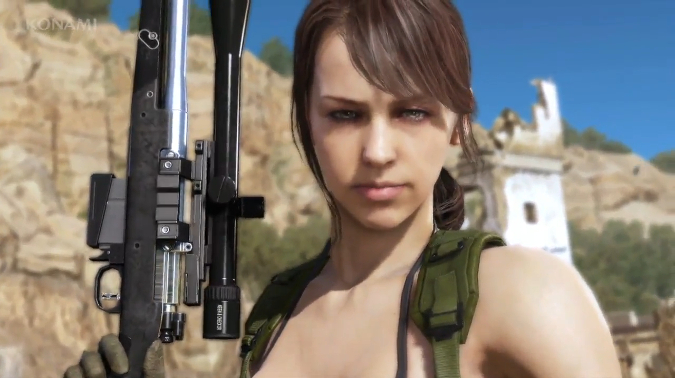
And yes, Snake and Raiden are sexualized, too. I fondly remember running around with butt-naked Raiden.
At the time of MGS2‘s release, the sudden switch to Raiden was disappointing. I loved Snake! Why do I want to be this guy? In hindsight, it was brilliant simply due to its execution. Nobody knew you’d be playing Raiden. Not a soul. If you go back and look at all of the marketing for Metal Gear Solid 2, you don’t see Raiden once. They never mention him. There are screenshots and still images and marketing footage of sections of the game where you play as Raiden, but the character model is Solid Snake instead.
Metal Gear Solid 2 is when The Patriots come into play. One of the major themes of Metal Gear Solid 2 is control of information — propaganda and media manipulation. You didn’t know you would be playing Raiden because Hideo Kojima didn’t want you to know. The development and marketing team only told you what they wanted you to know. The game’s message began before the game released — you can control peoples’ expectations by controlling the information they receive. That’s what the game was about.
Raiden worked for what Metal Gear Solid 2 set out to accomplish. That wasn’t a story you could tell as Solid Snake. Metal Gear Solid has always played around with the relationship between the player and the avatar and it really kicked off in Metal Gear Solid 2. You, controlling Solid Snake, were the hero of the story. Now, rather than Solid Snake being your avatar, you saw him as an external force — you weren’t embodying him anymore. You, as Raiden, were seeing him as others saw him. And you, as Raiden, started down the path to becoming that hero again. Who’s the hero, then? Snake? Raiden? The player? Does Solid Snake decide how he accomplishes a mission? Did Solid Snake decide to blow that guy’s brains out rather than hit him with a tranq dart and stuff him in a locker? No. You made that choice.
And when Raiden reappears in Metal Gear Solid 4? You’re playing Solid Snake again and Raiden is back as a total badass? You’re now seeing Raiden as others saw him, just like you saw Solid Snake as others saw him when you were playing Raiden. You are the badass.
The person behind the controller and the in-game avatar are inseparable. Metal Gear Solid 2 isn’t the only time you’re playing someone other than Snake. And it almost doesn’t matter. Because you’re Snake. Whoever you’re playing, that’s who wins. That’s who does the things they do because you are doing them. That’s one reason why Metal Gear Solid‘s moments of breaking the 4th wall work. Because in Metal Gear Solid, the wall is only a suggestion.
just putting it out there
Also i would love to see a metal gear game based around the boss.
I’d give a Metal Gear game without Kojima a shot. Hideo Kojima might be the brain behind (and poster child of) Metal Gear Solid, but he wasn’t the only person making the games. The series had other people involved, other writers, other developers, and I’d be willing to see what they produce. Without Kojima, maybe it would suck. But maybe it would be good, too. I’m hesitant to attribute every ounce of success to Kojima alone. A team makes games, not a person.
I would also very much love to see a game about The Boss.
Please consider supporting our Patreon!
Join the Discussion
Blizzard Watch is a safe space for all readers. By leaving comments on this site you agree to follow our commenting and community guidelines.
 @AlexZiebart
@AlexZiebart




